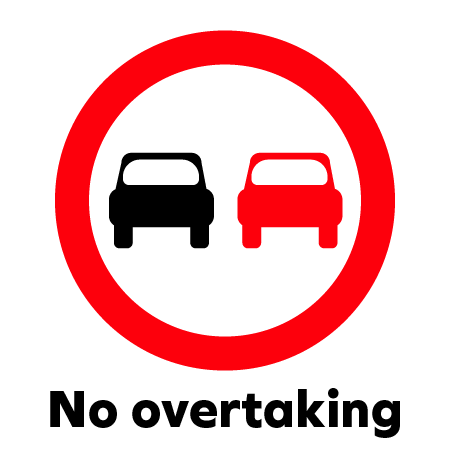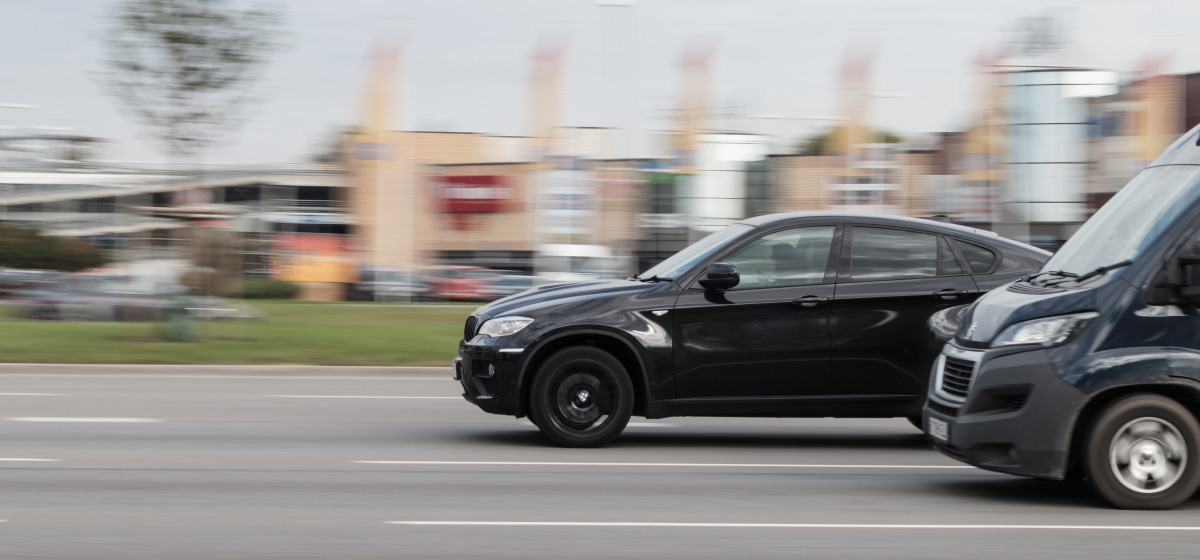Learning how to overtake safely is essential. At some point every driver will be on a single-lane road and get stuck behind a tractor, lorry or just someone who’s taking their sweet time. It can feel a bit daunting when you’re learning to drive, but don’t worry. We’re here to guide you through how to overtake safely, overtaking rules and when you should avoid overtaking.
How to overtake safely
- Before overtaking, think about whether you really need to overtake. If you’re getting off soon or the vehicle is only going a little bit below the speed limit, it may not be worth the risk of overtaking.
- Make sure it’s safe. Check there’s not a no overtaking sign, there are no hazards and you’re not coming up to a bend.
- Check both lanes. The road ahead should be clear on both sides and there needs to be a suitable gap in front of the road user you want to overtake.
- Look at your mirrors and signal before moving off. You’ll want to make sure no road users behind you are overtaking and then once you’re sure it’s safe, indicate to let other drivers know you’re about to move.
- Move swiftly past the vehicle you’re overtaking and allow plenty of room before moving back into the left-hand lane and maintaining a safe speed.
Overtaking rules
- Make sure you give vulnerable road users, such as horses and cyclists, as much room as possible when overtaking.
- When overtaking large vehicles (such as lorries), you need to drop back to give yourself more visibility on the road ahead of the vehicle. It takes longer to pass a larger vehicle, so you need to be sure that it’s safe to overtake and that you have enough room.
- If the car in front of you overtakes, don’t assume it’s safe for you to overtake. Unless you’ve done all your own checks, you can’t be sure it’s safe.
What’s the overtaking distance?
The Highway Code doesn’t give exact measures for the overtaking distance. However, as a general rule, leaving about a car width is a safe overtaking distance.
What are the rules when you’re overtaking cyclists?
The Highway Code says you should give cyclists just as much room as you would give a car. Motorcyclists and cyclists may suddenly need to avoid uneven road surfaces and obstacles on the road. Give them plenty of room and pay close attention to what they’re doing.
If a cyclist looks over their shoulder, it could mean that they’re planning on changing direction. If they do this, give them some extra space and don’t overtake them. While we’re on the subject of keeping cyclists safe, check out our article on the importance of doing the dutch reach when you get out of the car.
Can I exceed the speed limit when overtaking?
Although it’s important to move quickly when you’re overtaking, you shouldn’t exceed the limit. If you do speed, you could get penalty points on your license or need to take a speed awareness course. Not good!
What must you do when overtaking a car at night?
If you want to overtake at night, it’s important to make sure you’re not dazzling other drivers. Wait until you’ve passed them before you turn on your full beam lights. Heads up…this is a possible theory test question. If you’ve got a theory test coming up check out our tips on how to pass your theory test.
When may you overtake another vehicle on the left?
You can overtake another vehicle on the left when you’re driving on a one-way street. If you’re on a one-way street, you can overtake traffic travelling on either side. Follow the same rules as normal; check your mirrors and indicate before moving.
This is another theory test question. If you want to practice some more theory questions an app may be a good idea. We’ve reviewed the top 5 theory test apps to help get you started.
No overtaking sign
On some roads it may be illegal to overtake. If this is the case, there should be a no overtaking sign to make it clear you’re not allowed to overtake. The no overtaking sign is circular with a red border which means it’s giving an order. They’re often found on bends or on hills. Before you overtake, make sure you look out for the no overtaking sign.

Can you overtake on double white lines?
Double white lines on the road are also used to show drivers when it’s illegal to overtake. According to Rule 129 Highway Code, you’re only allowed to cross the line, provided the road is clear, to pass a stationary vehicle or overtake a bicycle, horse or road maintenance vehicle if they are travelling at less than 10mph. That means if you’re sitting behind a tractor doing 15mph and there’s a double white line, you shouldn’t overtake it.
What is a crawler lane?
A crawler lane – AKA a climbing lane – is a lane sometimes provided to slower-moving vehicles on hills. This allows more zippy cars and vehicles to overtake, and keeps traffic flowing.This is covered by Rule 139 of The Highway Code, which also says:“Use this lane if you are driving a slow-moving vehicle or if there are vehicles behind you wishing to overtake. Be aware of the signs and road markings which indicate the lane is about to end.”
So, these lanes will usually be used by larger vehicles, such as tractors, buses, coaches, or heavy goods vehicles (HGV), which slow right down on steeper gradients.
Where do you find crawler lanes?
Crawler lanes are largely found on steep sections of motorways, but not always. It’s also possible to have crawler lanes on dual carriageways, or even single carriageways now and again.
Crawler lanes are positioned on the left-hand side of the road, so that faster-moving traffic can overtake to the right, as normal.
Where should you avoid overtaking?
Unless there are road markings or a no overtaking sign, it’s up to you as a driver to decide whether or not it’s safe to overtake. But don’t worry, we’ve rounded up all the things you’ll want to look out for:
- You would have to enter an area designed to divide traffic – if this is the case it will be surrounded by a solid white line.
- The vehicle is near to a pedestrian crossing – especially when it’s stopped to let people cross.
- You would have to enter a lane reserved for buses, trams, or bicycles during its hours of operation.
- You have any doubt that you can’t see far enough ahead; such as when approaching a corner or bend, a hump bridge, or the brow of a hill.
- You’re somewhere where you might come into conflict with other road users, such as;
- When approaching (or at) a road junction
- Where the road narrows
- When approaching a school crossing patrol
- Between the kerb and a bus or tram when it’s at a stop
- Where traffic is queuing at junctions or roadworks
- When you would force another road user to swerve or slow down
- At a level crossing
- When a road user is indicating, even if you think the signal should have been cancelled
- You’re following a cyclist approaching a roundabout or junction, and you’re planning to turn left
Learning to drive?
If you’re learning to drive and need to build up your confidence with overtaking, why not get in some practice outside of your lessons? With our learner driver insurance, you can drive with supervision in a friend or family member’s car from 2 hours to 180 days.
